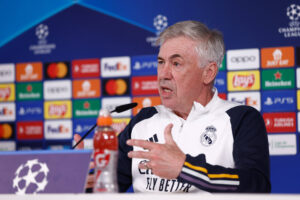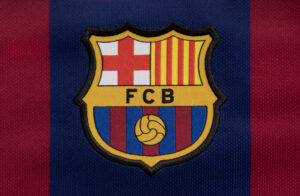Welcome to the Last Word on Football’s ‘Returning Players’ Series. In this edition, we take a look at striker Diego Costa.
The former Spain international had three spells at Atlético Madrid. He joined initially in 2007 but had to wait until 2010 to make his breakthrough.
He enjoyed two seasons in La Liga before moving to Chelsea, but the striker returned to the club in 2017. During his time in Spain, Costa won six trophies while playing for the Colchoneros.
Returning Players – Diego Costa
First Spell at Atlético Madrid
Costa began his career at Portuguese club Braga but impressed while on loan at Penafiel in the second division. His tally of five goals in 13 games prompted Atléti to sign the young striker.
However, Costa had to wait to make his Atlético bow and spent time on loan at Braga, Celta de Vigo and Albacete before Valladolid signed him. He finished as Blanquivioletas’ top scorer, which prompted Atléti to re-sign the forward.
Despite being the back-up striker to Diego Forlan and Sergio Agüero, Costa still turned out 39 times in all competitions, scoring eight goals. However, another loan spell followed as he netted ten goals in 16 appearances for Rayo Vallecano.
But his return to Atléti would eventually come good. Despite his disciplinary issues, new manager Diego Simeone was an admirer of Costa.
He ended the season with 20 goals in 44 appearances, one of which came in the Copa del Rey final against Madrid rivals Real, in which Atléti won 2-1. Costa also finished as the competitions top scorer with eight goals.
Despite being linked with a move to Liverpool, Costa remained in La Liga and it turned out to be his most prolific season in terms of goals, netting 36 times in all competitions. He scored the first two of his 27 league goals in a 3-1 win over Sevilla on the opening day.
Another brace in a win over Osasuna saw Atléti remain level on points at the top with Barcelona before Costa netted the only goal as the club won at the Santiago Bernabeu against rivals Real. He had equalled his tally of ten goals in the previous season in just eight games.
Costa netted twice on his Champions League debut in a 3-0 win over Austria Wien and scored three times over the two legs against AC Milan in the knockout round. Atléti progressed to the final of the competition for the first time since 1974 when Costa netted in the semi-final against Chelsea.
Costa and Atlético secured their first La Liga title since 1996 but the striker picked up a hamstring injury on the final game of the season which would rule him out of the Champions League final. However, that would end in defeat against Real Madrid. Despite the loss, Costa became the club’s joint-highest scorer in Europe with eight goals – a record which stood from 1959.
Teams That Diego Costa Played for in Between
In the summer, Chelsea matched the £32 million buyout clause in Costa’s contract. He netted on his competitive debut in a 3-1 win at Burnley in what was a solid start for the striker. Costa added further goals in a win over Everton and netted a hat trick in a 4-2 win over Swansea City. However, the recurring hamstring injury would limit his match time over the coming months.
Despite that, Costa notched his tenth goal of the season in a 2-1 win over Liverpool before netting the Blues’ second goal in a 2-0 win over Tottenham Hotspur in the League Cup final.
Despite missing the latter stages of the campaign through injury, Chelsea won the Premier League title before Costa came on as a substitute and scored in the final league game of the season.
The following season, Costa missed the Community Shield defeat to Arsenal but opened his account in a win over West Brom before scoring in the Champions League group stage win over Maccabi Tel Aviv.
After Jose Mourinho was sacked, Costa netted seven times in eight games under the temporary charge of Guus Hiddink. Costa scored 16 times from 41 appearances but it was a disappointing campaign for the Blues.
Costa netted on the opening day of the following season in a 2-1 win over West Ham under new manager Antonio Conte, before goals against Premier League champions Leicester City and Middlesbrough.
But, after a falling out with Conte, game time was limited for the striker. Despite that, Costa netted his 52nd goal on his 100th Chelsea appearance and was the Blues top scorer with 20 league goals as they secured another Premier League title. He also scored in the FA Cup final against Arsenal, but the Gunners won 2-1.
Return to Atlético
Costa was told that he was no longer part of Conte’s plans and was omitted from the Blues squads. He returned to Atlético having scored 58 times in 120 Chelsea appearances.
Despite passing a medical in September, Diego Simeone had to wait until January before the striker could return to the club.
He netted on his second debut against Lleida Esportiu in the Copa del Rey round of 16, just five minutes after being substituted on. He scored in his first league match in a 2-0 win against Getafe but was sent off for his celebration having already picked up a yellow card in the game.
Costa scored against Arsenal in the Europa League semi-final and played in the final as Atlético won 3-0 against Olympique de Marseille.
He netted a brace against Real Madrid in a 4-2 win in the UEFA Super Cup before marking his 200th Atléti appearance in a 5-0 win over Osasuna. His final goal of the season came in a 1-0 home win over Real Betis, ensuring Champions League qualification.
The following season, Costa made just seven appearances before his contract was ended by mutual consent in December. He scored twice, with his final goal coming in a 3-1 win over Elche.
Costa had a hugely successful career at Atlético. On top of his League Cup and two Premier League titles in England, the striker secured one La Liga, one Copa del Rey, one Europa League and three UEFA Super Cups during his time in Spain.
Costa’s reputation throughout his career may have held him back during his time at Chelsea, but it has aided him in Spain while under Diego Simeone and the way he likes to play. He ended his Atlético career with 83 goals from 215 appearances. Amazingly, he only picked up five red cards throughout his career, but many of his suspensions have been a result of retrospective actions.
Main Photo






